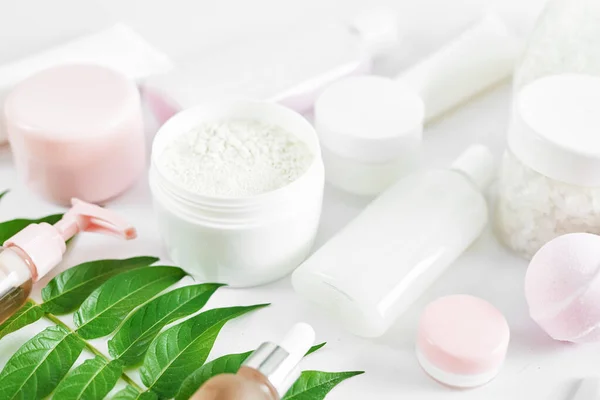What are active ingredients in skincare, and how do they influence your skin’s health and appearance?
Discovering the secret behind radiant, healthy skin often starts with understanding what truly powers your skincare products.
Active ingredients are the superheroes of skincare formulations, working diligently to tackle specific skin concerns and deliver transformative results.
From boosting collagen production to brightening dark spots, these potent elements are key to unlocking your best complexion.
Dive into the world of active ingredients and learn how they can revolutionize your skincare routine for a visibly improved and more vibrant skin.

What Are Active Ingredients In Skincare
Active ingredients in skincare are substances that have a direct effect on the skin. They are responsible for delivering visible results and addressing specific skin concerns.
Commonly found in serums, creams, and treatments, these ingredients work to improve skin texture, tone, and overall health. Understanding their roles helps in selecting products that effectively target individual needs.
Types of Active Ingredients
Active ingredients can be classified into several categories based on their functions and benefits. These include:
Antioxidants
Antioxidants like Vitamin C and E protect the skin from environmental damage. They neutralize free radicals, which can cause premature aging. Antioxidants also brighten the complexion and enhance skin radiance.
Exfoliants
Exfoliating agents such as alpha hydroxy acids (AHAs) and beta hydroxy acids (BHAs) help remove dead skin cells. They promote cell turnover, leading to smoother and more even-toned skin. Regular exfoliation can improve skin texture and reduce the appearance of blemishes.
Hydrators
Ingredients like hyaluronic acid and glycerin attract and retain moisture in the skin. Hydrators keep the skin plump and supple, reducing the appearance of fine lines and dryness. They are essential for maintaining a healthy, hydrated complexion.
Retinoids
Retinoids, including retinol and tretinoin, stimulate collagen production and accelerate cell turnover. They help reduce the appearance of wrinkles, fine lines, and age spots. Retinoids are powerful anti-aging ingredients that improve skin texture and tone.
Niacinamide
Niacinamide, also known as Vitamin B3, enhances the skin’s barrier function. It reduces inflammation, evens out skin tone, and minimizes the appearance of pores. Niacinamide is suitable for all skin types and helps in addressing various skin concerns.
How Active Ingredients Work
Active ingredients penetrate the skin and interact with cellular processes to deliver their benefits. Their efficacy depends on their concentration, formulation, and delivery system.
For optimal results, it’s crucial to choose products with well-researched and effective active ingredients. Combining different actives can enhance their benefits, but it’s important to do so thoughtfully to avoid adverse reactions.
Choosing the Right Active Ingredients
Selecting the right active ingredients involves understanding your skin type and concerns. For example, if you have dry skin, look for hydrating ingredients. For aging skin, focus on retinoids and antioxidants.
Consulting with a dermatologist can provide personalized recommendations and ensure that you use ingredients that complement your skincare routine.
In summary, active ingredients are the core of effective skincare. They target specific skin issues and deliver visible improvements. Knowing their types and functions helps in making informed choices for achieving healthy, radiant skin.

Role of Active Ingredients
Efficacy and Purpose
Active ingredients are crucial in skincare for their specific benefits. They target various skin concerns such as aging, dryness, and pigmentation.
For example, retinoids are renowned for anti-aging, promoting cell turnover and reducing wrinkles. Hyaluronic acid is celebrated for deep hydration, plumping the skin and diminishing fine lines.
Vitamin C brightens the complexion and evens out skin tone by reducing dark spots and enhancing radiance. Each active ingredient serves a unique purpose, addressing specific skin issues with proven effectiveness.
Mechanism of Action
Active ingredients work by interacting with skin cells at a molecular level. They penetrate different skin layers to deliver their benefits where needed.
For instance, retinoids travel to the deeper layers of the skin, promoting collagen production and accelerating cell renewal. Hyaluronic acid binds water molecules, providing hydration at multiple skin levels.
Vitamin C penetrates the epidermis to neutralize free radicals and stimulate collagen synthesis. Understanding how these ingredients penetrate and act within the skin helps in choosing the right products for targeted results.
Categories of Active Ingredients
Anti-Aging Ingredients
Retinoids
Retinoids, including Retinol, Retinoid, and Tretinoin, are powerful anti-aging ingredients. They boost collagen production and reduce fine lines. Potential side effects include dryness and irritation.
Retinoids promote cell turnover, revealing smoother skin. Always use retinoids at night to avoid sun sensitivity.
Peptides
Peptides, such as Matrixyl and Copper Peptides, stimulate collagen production. These ingredients help firm and plump the skin.
Peptides enhance skin elasticity and reduce wrinkles. They support the skin’s repair processes, making them essential in anti-aging routines.
Growth Factors
Growth factors aid in skin repair and regeneration. They promote cellular turnover and improve skin texture. Examples include Epidermal Growth Factor (EGF) and Fibroblast Growth Factor (FGF).
Growth factors are effective in reducing signs of aging and enhancing skin healing.
Hydrating Ingredients
Hyaluronic Acid
Hyaluronic Acid retains moisture in the skin. It attracts and holds water, keeping skin hydrated. Variants include low and high molecular weight hyaluronic acid, which penetrate different skin layers. This ingredient provides plump, youthful skin.
Glycerin
Glycerin is a humectant that draws moisture from the environment into the skin. It helps keep skin soft and hydrated.
Unlike other humectants, glycerin is highly effective at maintaining skin’s moisture balance. It’s essential for a hydrated and smooth complexion.
Brightening Ingredients
Vitamin C
Vitamin C, including Ascorbic Acid and Ascorbyl Palmitate, brightens the skin and evens out skin tone. It inhibits melanin production, reducing dark spots.
Vitamin C also provides antioxidant protection against environmental damage. It’s a staple in brightening skincare routines.
Niacinamide
Niacinamide improves uneven skin tone and reduces redness. It strengthens the skin barrier and enhances hydration.
Compatible with most ingredients, niacinamide is versatile and effective for various skin concerns. It promotes a more radiant and balanced complexion.
Exfoliating Ingredients
Alpha Hydroxy Acids (AHAs)
AHAs like Glycolic Acid and Lactic Acid exfoliate the skin’s surface. They remove dead skin cells, revealing brighter skin. AHAs enhance skin texture and promote a youthful glow. They are ideal for dry and sun-damaged skin.
Beta Hydroxy Acids (BHAs)
Salicylic Acid is a popular BHA that penetrates pores to clear acne and excess oil. It exfoliates inside the pores, reducing blackheads and breakouts. BHAs are beneficial for oily and acne-prone skin, offering a deeper exfoliation.
Anti-Inflammatory Ingredients
Ceramides
Ceramides help restore and maintain the skin barrier. They are crucial for sensitive skin, protecting against irritation. Ceramides prevent moisture loss and enhance overall skin resilience. They are essential in soothing and hydrating products.
Centella Asiatica
Centella Asiatica, known for its calming and healing properties, reduces inflammation and promotes skin repair. It is commonly found in soothing and reparative skincare products. This ingredient is excellent for sensitive and irritated skin.
Sunscreen Actives
Chemical Sunscreens
Chemical sunscreens like Octocrylene and Avobenzone absorb UV rays. They provide broad-spectrum protection and are often lightweight. Chemical sunscreens are ideal for daily use and blend easily into the skin.
Physical (Mineral) Sunscreens
Mineral sunscreens, including Zinc Oxide and Titanium Dioxide, reflect UV rays. They are gentle on sensitive skin and offer a physical barrier against the sun. These sunscreens are ideal for those with delicate or reactive skin.



